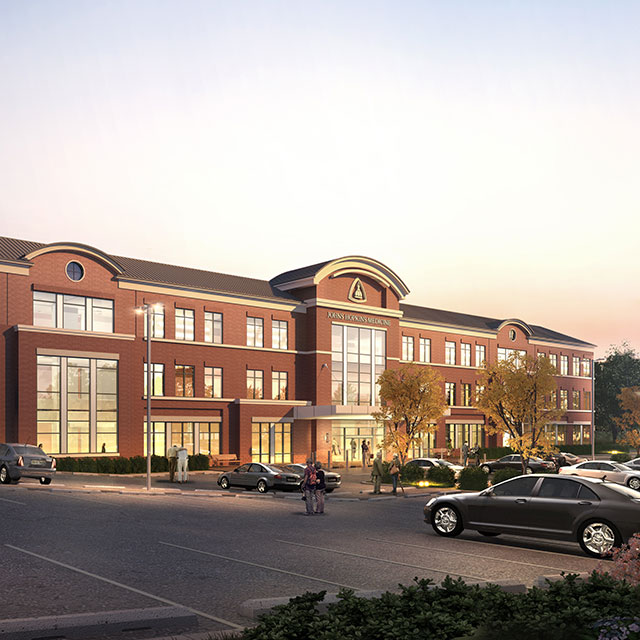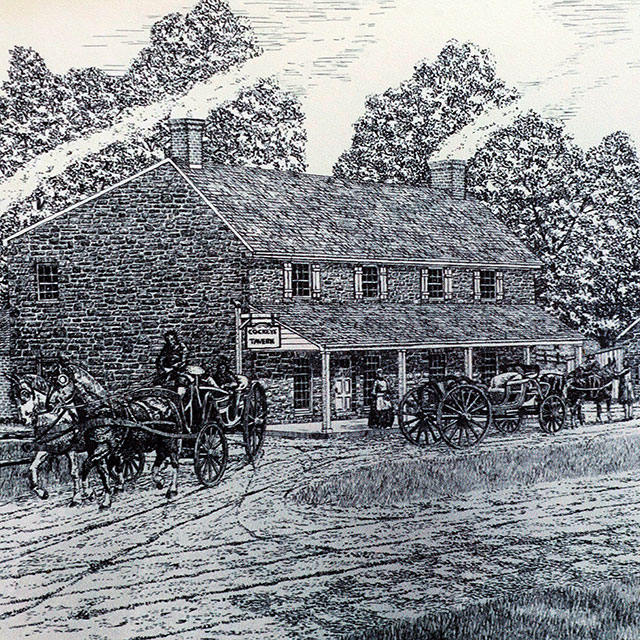With just days to go before its May 28 opening, the new Pavilion III of the Johns Hopkins Health Care & Surgery Center — Green Spring Station whirled with activity.
Nurses unpacked boxes of medical supplies, technologists tinkered with massive new MRI machines and pharmacists toured the building. Department managers were planning “day in the life” simulations to walk through the details of how patients and clinicians will use the space.
Gill Wylie, president of Johns Hopkins Medical Management, led a tour of the ambulatory surgical center, noting that one of the operating rooms is large enough to accommodate robotic surgery.
After years of planning, construction and attention to every detail, the three-story, 110,000-square-foot Pavilion III at the Johns Hopkins Health Care & Surgery Center — Green Spring Station was almost ready for its first patients.
“The key thing is that the move is seamless from the patient’s perspective,” said Stephen Sisson, vice president for clinical operations for the Office of Johns Hopkins Physicians. To make that happen, Sisson has been convening groups of experts to consider clinical logistics.
“We used our group of experts to identify themes of potential issues,” he said. “What will you do with that piece of equipment? How will it be cleaned? We went through the minutiae of a patient visit from multiple perspectives and with multiple scenarios.”
The second floor opens May 28. It houses facial plastics and otolaryngology that will provide adult and pediatric services such as hearing testing, and access to sinus, thyroid, voice and head and neck cancer experts. Also on the second floor is a new musculoskeletal center that combines orthopaedics and physical medicine and rehabilitation.
“It’s a huge benefit to have the two together,” said Marina Linder, ambulatory services manager for orthopaedics at Green Spring. “Patients will get their care in one place.”
Opening June 3 will be the first floor, with oncology, imaging and laboratories. The oncology center, in Pavilion II for 18 years, will be larger, with 19 infusion bays instead of 12, says Sandra Bailey, oncology manager. She notes that patients can get imaging, labs and treatments on the same floor. “It’s very patient-centric,” she said.
She’s particularly enthusiastic about a donation-funded healing garden that will be complete in the fall. “Patients can go out with their infusion poles and get a breath of fresh air and forget about everything for a minute,” she said.
LaKiesha Brown, site manager for Johns Hopkins Medical Imaging, said her department is moving from three locations in Pavilions I and II at Green Spring Station to a single larger one at Pavilion III.
“Now we’re all going to be together,” she said. The combined space, which will have three MRI machines instead of one, will also provide CT scans, mammography, X-rays, ultrasound and bone density scans.
One new feature will be separate waiting rooms for patients getting routine scans, versus those who have more complex imaging needs. The new MRI machines will deliver better image quality in less time, said Eileen Day, the MRI educator at The Johns Hopkins Hospital, who was on-site to help train users and create protocols that serve as instructions for the machines.
Wylie says the third Johns Hopkins pavilion at Green Spring Station will increase the number of patient encounters at Green Spring Station from 550,000 to more than 750,000 per year. He notes that the driving force for the project was the need for more ambulatory surgery space.
Three operating rooms will open first, then two more in January, with a sixth in the future. Moving many of the simpler ear, nose and throat, urologic, and orthopaedic outpatient procedures to Green Spring frees up Johns Hopkins hospitals for more complex inpatient surgeries.
Pavilion III opens almost exactly 25 years after Johns Hopkins cut the ribbon on Pavilion I in the Lutherville location in 1994, and five years after the institution purchased the land, which previously housed tennis facilities, for the development.
The property was particularly appealing, said Wylie, because it is inclined, allowing both the first and second stories to have ground-floor entrances that are more convenient for patients and families.
Construction began in the summer of 2017 and, like most big projects, did not go completely according to plan. “We hit rock immediately,” said Wylie. “A ton of it.” The rock had to be blasted out before work could continue.
For the past year and a half, Terri Wolfe, director of design and planning for Johns Hopkins Medical Management, has been holding once-a-month meetings and sending out reports with updates on equipment, furniture and move status. About 400 computers, plus medical supplies and equipment, are being moved from locations in Pavilion I and II to the new location.
“It’s a lot of detail and organization,” said Kimberly Francis, an MRI technologist on hand for setup and testing of the new equipment. “Our staff has done a lot of training. With a fresh new space and new equipment, we can do more and better exams than we did before.”






